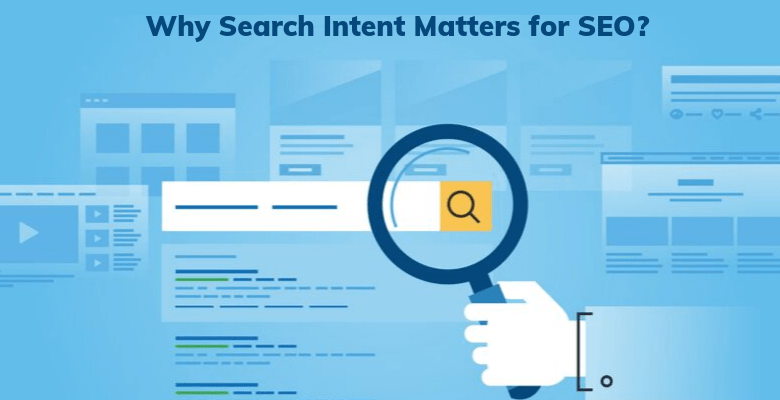Understanding Search Intent: A Crucial Element of Keyword Optimization

Search intent, also known as user intent, refers to the reason behind a user’s online search query. Understanding the search intent of your target audience is crucial for creating effective keyword optimization strategies. By identifying the type of search intent behind a user’s query, you can create relevant content that matches their needs and expectations. This not only helps in ranking higher in search results but also improves the overall user experience and increases the likelihood of conversion.
Importance of Search Intent in Keyword Optimization
Search intent plays a critical role in keyword optimization because it helps you target the right keywords and create content that matches the user’s search intent. By targeting keywords that align with the user’s search intent, you increase your chances of ranking higher in search results and driving more traffic to your website. Additionally, creating content that matches the user’s search intent improves the user experience and increases the likelihood of conversion. Therefore, understanding search intent and optimizing your keywords accordingly is crucial for creating effective SEO services strategies that can help you achieve your business goals.
Different Types of Search Intent
Search intent can be categorized into four types: informational, navigational, commercial, and transactional. Informational search intent is when the user is looking for information or answers to their questions. Navigational search intent is when the user is trying to find a specific website or page. Commercial search intent is when the user is researching a product or service. Transactional search intent is when the user is ready to make a purchase or take a specific action, such as signing up for a newsletter. Understanding these different types of search intent is essential for creating content that matches the user’s needs and expectations.
How to Identify Search Intent
Identifying search intent requires analyzing the user’s search query and understanding the context behind it. One way to identify search intent is to look for keywords in the query that indicate the user’s purpose, such as “how to,” “best,” or “buy.” Another approach is to examine the search results for the query and determine the type of content that is ranking. If the top results are informational articles, the search intent is likely informational. If the top results are product pages, the search intent is likely commercial or transactional. Using tools like Google Analytics and Google Search Console can also provide valuable insights into user behavior and search intent.
Using Long-Tail Keywords for Specific Search Intent
Long-tail keywords are more specific and longer phrases than traditional keywords. They can be very effective for targeting specific search intent because they provide more context and detail about what the user is looking for. For example, “best hiking boots for women” is a long-tail keyword that targets commercial search intent for a specific product. By using long-tail keywords, you can attract more targeted traffic to your website and improve your chances of ranking higher in search results. Additionally, long-tail keywords can be less competitive and easier to rank for, especially in niche markets.
Mapping Keywords to Search Intent
Mapping keywords to search intent involves aligning your target keywords with the different types of search intent. By doing so, you can create content that matches the user’s search intent and provides value to the user. To map keywords to search intent, start by researching and identifying the keywords that align with each type of search intent. Then, create content that targets those keywords and matches the user’s needs and expectations. By mapping keywords to search intent, you can improve your chances of ranking higher in search results, attracting more targeted traffic to your website, and ultimately achieving your business goals.
Crafting Content that Matches Search Intent
Crafting content that matches search intent involves creating content that provides value to the user and aligns with their search query. To do this, start by analyzing the search intent behind the user’s query and identifying the keywords that align with that intent. Then, create high-quality content that provides answers to the user’s questions, solves their problems, or satisfies their needs. Make sure to use the target keywords in a natural and meaningful way, and structure the content in a way that is easy to read and understand. By crafting content that matches search intent, you can improve the user experience, increase engagement, and drive more conversions.
Measuring the Success of Search Intent Optimization
Measuring the success of search intent optimization involves tracking key performance indicators (KPIs) that are relevant to your business goals. For example, if your goal is to increase website traffic, you can track metrics such as organic search traffic, bounce rate, and time on site. If your goal is to increase conversions, you can track metrics such as click-through rate, conversion rate, and revenue. By monitoring these KPIs, you can evaluate the effectiveness of your search intent optimization strategies and make data-driven decisions to optimize your SEO services efforts. Additionally, You can Hire the Best agency for Optimizing your website for Better results we are one of the Best Digital Marketing Company in Dehradun For more information you can visit our website.
Common Mistakes to Avoid
Some common mistakes to avoid in search intent optimization include failing to understand the user’s search intent, targeting the wrong keywords, creating low-quality or irrelevant content, and neglecting to measure and analyze the performance of your optimization efforts. Another mistake is optimizing for search engines rather than for the user, which can result in a poor user experience and lower search rankings. It is also important to avoid keyword stuffing and other black hat SEO practices, which can result in penalties and damage to your website’s reputation. By avoiding these mistakes, you can create effective search intent optimization strategies that improve your search rankings, drive traffic, and achieve your business goals.
Final Thoughts
Search intent optimization is a crucial element of keyword optimization that involves understanding the user’s search intent and creating content that matches their needs and expectations. By mapping keywords to search intent, creating high-quality content, and monitoring key performance indicators, businesses can improve their search rankings, attract targeted traffic, and achieve their business goals. However, it is important to avoid common mistakes and stay up-to-date with search engine algorithms and trends. By continuously refining and optimizing your search intent optimization strategies, you can stay ahead of the competition and drive sustained growth for your business. CLICK HERE TO READ MORE




